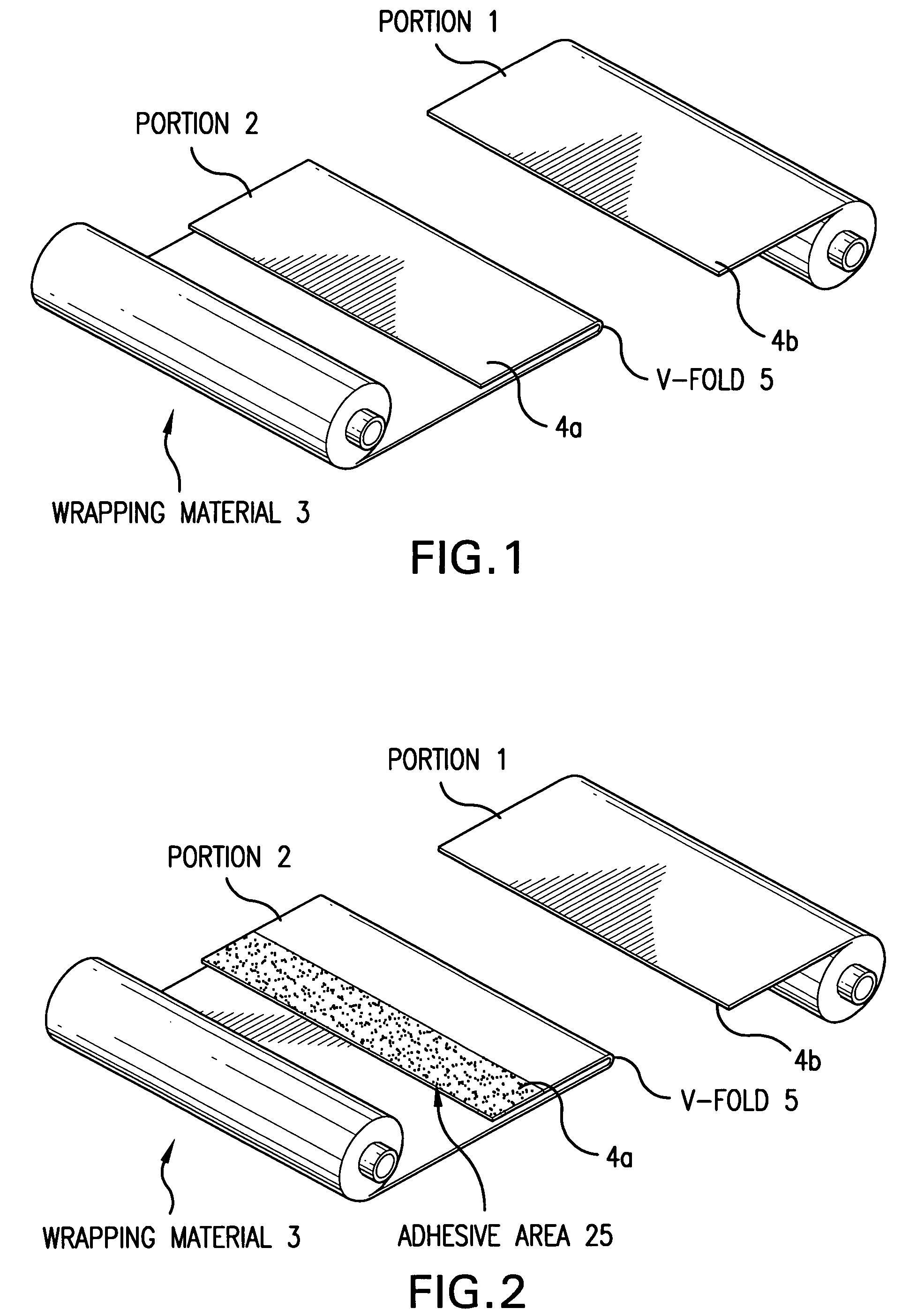Wrapping material with a Z-lock system
a technology of z-lock and material, applied in the field of wrapping materials, to achieve the effect of preventing the possibility of premature separation, preventing premature separation, and reducing the adhesion ra
- Summary
- Abstract
- Description
- Claims
- Application Information
AI Technical Summary
Benefits of technology
Problems solved by technology
Method used
Image
Examples
Embodiment Construction
[0031]The material and methods of the present invention will now be discussed with reference to FIGS. 1-12. Like reference numbers and designations in these figures refer to like elements.
[0032]FIG. 1 is a perspective illustration of the wrapping material in accordance with an embodiment of the present invention. The wrapping material 3, being prepared in FIGS. 1-4, includes at least two wrapping portions 1, 2, with predetermined lengths. The wrapping material 3 can be made from polyolefins, such as polyethylene, or other suitable polymeric material that is approximately 40 to 120 microns thick and 50 to 400 centimeters in width. Additionally, the wrapping material 3 may also be clear or be pigmented. However, the material used for the wrapping portions 1, 2 is in no way limited to the materials discussed above and can include netting or other suitable wrapping material, natural or man-made. The length and width of each wrapping portion 1, 2 should be enough to at least cover the ci...
PUM
| Property | Measurement | Unit |
|---|---|---|
| thick | aaaaa | aaaaa |
| thick | aaaaa | aaaaa |
| total length | aaaaa | aaaaa |
Abstract
Description
Claims
Application Information
 Login to View More
Login to View More - R&D
- Intellectual Property
- Life Sciences
- Materials
- Tech Scout
- Unparalleled Data Quality
- Higher Quality Content
- 60% Fewer Hallucinations
Browse by: Latest US Patents, China's latest patents, Technical Efficacy Thesaurus, Application Domain, Technology Topic, Popular Technical Reports.
© 2025 PatSnap. All rights reserved.Legal|Privacy policy|Modern Slavery Act Transparency Statement|Sitemap|About US| Contact US: help@patsnap.com



